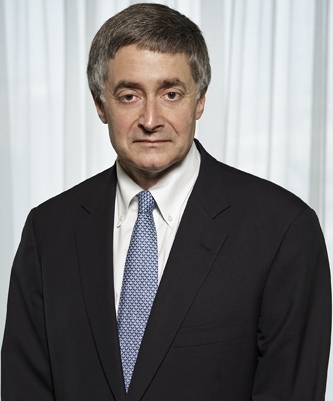The City Council is now considering renaming Confederacy-themed streets in Grant Park, taking up a dormant committee recommendation. But a Confederate monument in Buckhead was on the removal list, too, and the president of the Atlanta History Center says its historical inaccuracy should be tackled.
The Peachtree Battle Avenue monument should get a companion sign addressing slavery and racism, says Sheffield Hale, the history center president and co-chair of the committee that reviewed Confederate monuments on city property.
The monument, which was erected by the Old Guard of Atlanta in 1935 on what is now a Peachtree Battle median near E. Rivers Elementary, says in part, “This memorial is a tribute to American valor, which they of the blue and they of the Blue and they of the Gray had as a common heritage.”
“If you’re concerned about it, don’t sit there and do nothing. Contextualize it,” Hale said in a recent interview. “Take the artifact and explain it. Say the war was actually about slavery. Start with that.”
The advisory committee co-chaired by Hale was formed by previous Atlanta Mayor Kasim Reed in 2017 after white nationalists rallied in Charlottesville, Va., to call for preserving such monuments.
The committee, among many recommendations, called for removing and storing the Buckhead monument. But state law currently bars removing such monuments under a provision that is itself controversial.
Neither state Sen. Nikema Williams or Rep. Beth Beskin, who both represent the area the monument is located, responded to request a for comment. The office of Atlanta City Councilmember J.P. Matzigkeit, who represents the area, declined to comment.
Hale said the city should add context about what the monument does, and doesn’t, say.
Adding context is a strategy the Atlanta History Center, headquartered in Buckhead on West Paces Ferry Road, has championed since 2015. A report it released at that time questioned monuments that celebrate the Confederacy while leaving out key facts about the Civil War. The museum’s report followed a white supremacist’s mass murder at a Charleston, S.C., African-American church, which triggered a debate about Confederate monuments and symbols.
Although Hale co-chaired the advisory group, the committee’s majority voted to recommend the monument be removed.
“What I would recommend, if I was asked, was that we contextualize it, like we’ve been recommending,” he said.
The decision was made after the monument’s inscription was read aloud in the meetings, he said.
“When this language was read out in public meetings, there was a visceral reaction from the committee that said this is offensive and it needs to be removed,” Hale said.
The monument is part of the category of “reconciliation” monuments that celebrate the U.S. unifying after the Civil War, but are problematic because they ignore other important facts, Hale said.
Buckhead has at least two Confederate monuments, but the other is located on private land and owned by the private Piedmont Hospital. It is temporarily in storage while the hospital completes its renovation.
The two monuments both refer to the “valor” of both sides of the war.
Members had a problem with the Peachtree Battle monument equating both the Union and Confederacy and ignoring slavery as the cause of the war, Hale said.
Hale would add context that explains what the monument doesn’t say, including the ramifications of Jim Crow laws, which perpetuated racial segregation and were still in effect at the time the monument was erected.
“That’s the issue with these reconciliation monuments. They ignore the cause of the war and they ignore the aftermath and the institution of Jim Crow,” Hale said. “But I think that also gives you an opportunity to contextualize and tell that story of what’s missing.”
While the city does have several monuments in cemeteries and another “reconciliation” monument in Piedmont Park, the Peace Monument, Hale said Atlanta has much less than other Southern cities. He said it was important that the committee appropriately treated monuments in cemeteries that are more about mourning differently from the more celebratory monuments, like the one on Peachtree Battle Avenue.
“Whether you agree that it should be removed or not, it’s clearly different from the ones that are in Oakland Cemetery,” he said.
Hale said he is not surprised that Confederate Avenue was the first recommendation the City Council chose to address because it was “the hot-button issue.”
Besides being prohibited from state law, removing or even adding context to the monument in Buckhead may be a low priority due to its lack of visibility, Hale said. The monument is tucked away in the middle of a median and surrounded by bushes.
“This is a diminutive statue in a place that nobody really goes,” he said. “It’s not in your face, so it’s probably not at the top of list of major issues. But it’s also something that can easily be dealt with, in my view, with a contextualization marker.”


